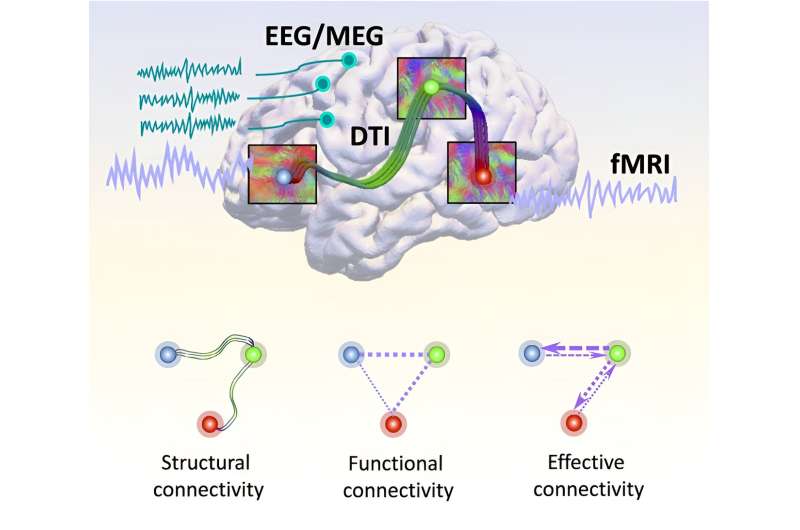This article has been reviewed according to Science X's editorial process and policies. Editors have highlighted the following attributes while ensuring the content's credibility:
fact-checked
proofread
Unlocking Alzheimer's mysteries: A comprehensive brain connectome-based survey

In a study published in Psychoradiology researchers from the University of Texas at Arlington and the University of Georgia have systematically summarized studies on brain networks within the context of AD, critically analyzed the strengths and weaknesses of existing methodologies, and offered novel perspectives and insights, intending to serve as inspiration for future research.
The study offers a comprehensive overview of the dynamic landscape of Alzheimer's disease (AD) research within the realm of brain network analysis. It underscores the pivotal role of brain networks in elucidating the mechanisms underpinning AD and their profound impact on disease progression.
The review sheds light on the rich spectrum of graph-based methods employed in AD investigations, classifying them into traditional graph theory-based approaches and cutting-edge deep graph neural network-based techniques. These methodologies have significantly enriched our understanding of AD by unveiling intricate patterns within brain networks.
Consequently, they have opened doors to pioneering diagnostic tools, predictive models, and the identification of potential biomarkers. Moreover, this review highlights numerous substantial challenges lying ahead.
These challenges encompass issues such as the interpretability of complex models and the effective integration of multimodal data, especially within the context of limited medical datasets. Addressing these hurdles remains paramount for the continued advancement of AD research and its translation into clinical practice.
Lead researcher, Dr. Lu Zhang, states, "Today, we have easier access to diverse modalities of data and possess more powerful computational models. I firmly believe that based on these advancements, we will ultimately overcome Alzheimer's disease in the near future."
More information: Lu Zhang et al, Exploring Alzheimer's disease: a comprehensive brain connectome-based survey, Psychoradiology (2024). DOI: 10.1093/psyrad/kkad033



















